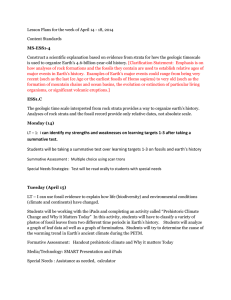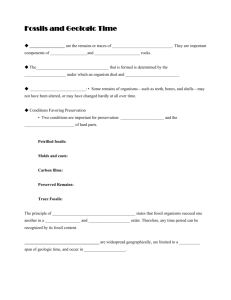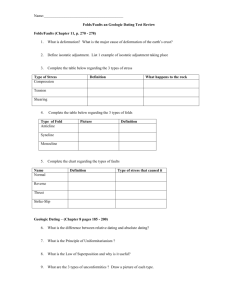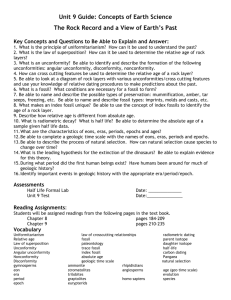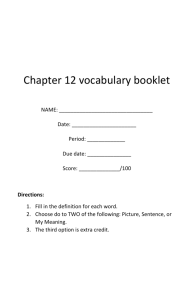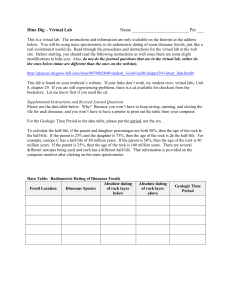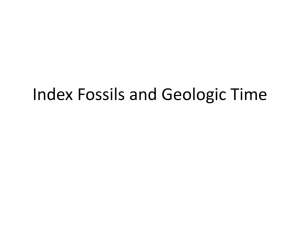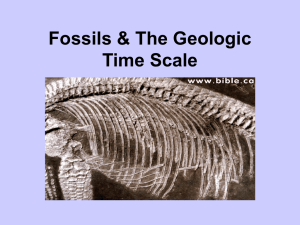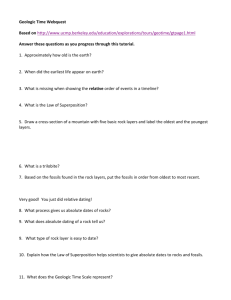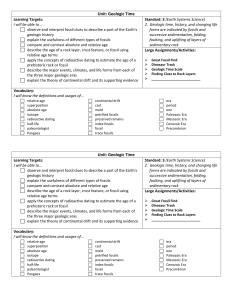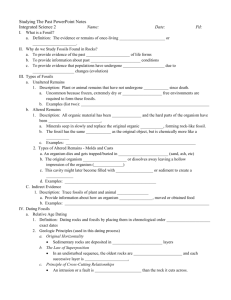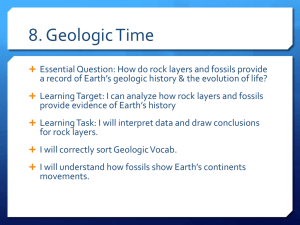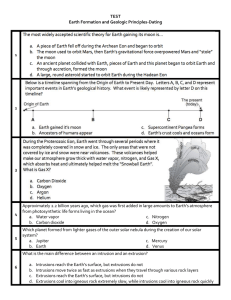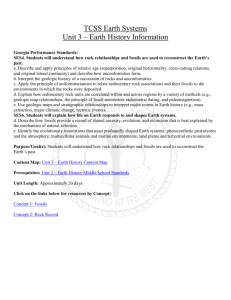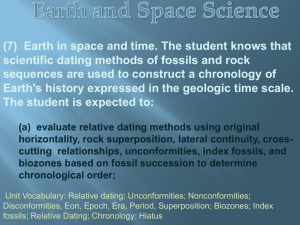EARTH SCIENCE - CHAPTER 6 STUDY GUIDE
advertisement
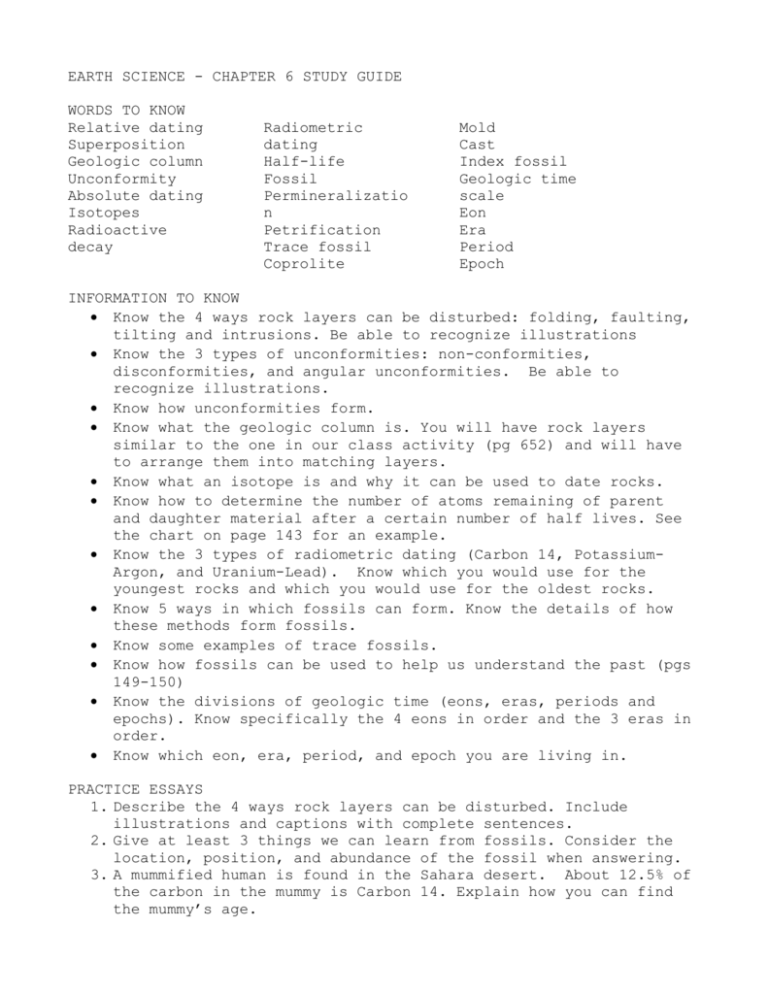
EARTH SCIENCE - CHAPTER 6 STUDY GUIDE WORDS TO KNOW Relative dating Superposition Geologic column Unconformity Absolute dating Isotopes Radioactive decay Radiometric dating Half-life Fossil Permineralizatio n Petrification Trace fossil Coprolite Mold Cast Index fossil Geologic time scale Eon Era Period Epoch INFORMATION TO KNOW Know the 4 ways rock layers can be disturbed: folding, faulting, tilting and intrusions. Be able to recognize illustrations Know the 3 types of unconformities: non-conformities, disconformities, and angular unconformities. Be able to recognize illustrations. Know how unconformities form. Know what the geologic column is. You will have rock layers similar to the one in our class activity (pg 652) and will have to arrange them into matching layers. Know what an isotope is and why it can be used to date rocks. Know how to determine the number of atoms remaining of parent and daughter material after a certain number of half lives. See the chart on page 143 for an example. Know the 3 types of radiometric dating (Carbon 14, PotassiumArgon, and Uranium-Lead). Know which you would use for the youngest rocks and which you would use for the oldest rocks. Know 5 ways in which fossils can form. Know the details of how these methods form fossils. Know some examples of trace fossils. Know how fossils can be used to help us understand the past (pgs 149-150) Know the divisions of geologic time (eons, eras, periods and epochs). Know specifically the 4 eons in order and the 3 eras in order. Know which eon, era, period, and epoch you are living in. PRACTICE ESSAYS 1. Describe the 4 ways rock layers can be disturbed. Include illustrations and captions with complete sentences. 2. Give at least 3 things we can learn from fossils. Consider the location, position, and abundance of the fossil when answering. 3. A mummified human is found in the Sahara desert. About 12.5% of the carbon in the mummy is Carbon 14. Explain how you can find the mummy’s age. 4. Out in the badlands, you notice an igneous intrusion in some sedimentary rock. Without testing the rock, can you tell if the igneous intrusion is older or younger than the sedimentary rock? How do you know? 5. Scientists know that tropites existed only for about 20 million years, which is a very short period of time for an organism. How could scientists use this information?


